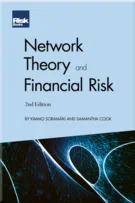Moving from Value-at-risk to Expected Shortfall
Overview and Impact
The Boundary Between Trading and Banking Books Under FRTB
Moving from Value-at-risk to Expected Shortfall
The Standardised Approach
The Internal Models Approach
Default Risk Charge: Standardised and Internal Models Approaches
P&L Attribution and Backtesting
Regulating and Managing Non-modellable Risk Factors
Impact of a Capital Floor
Managing Regulatory Trading Desk Frameworks
Implementation of FRTB Framework
Model Frameworks and Management
Regulatory Responsibilities and Supervisory Framework
FRTB January 2017 FAQ Response and Review
“Every year, if not every day, we have to wager our salvation upon some prophecy based upon imperfect knowledge” – US Supreme Court (1919)
Since its selection by BCBS in 1996 as the principal market risk measure and determinant of capital, VaR has gained widespread adoption, but during the global financial crises of 2007–2009, regulators and banks came to the harsh realisation of VaRs limitations for capturing tail risks. This led BCBS to replace VaR and stressed VaR with ES as the principal risk parameter for determination of IMA capital charge. This shift is desirable because, as a risk measure, ES incorporates notional levels and likelihood of loss, and also captures tail risk in a way that VaR does not. The challenges for adoption of ES as the main risk parameter will be reliable backtesting and the possibility of large fluctuations in capital charge at the desk level, which makes return estimates and capital management problematic. Traders and other front-office personnel will have to adapt to ES in limit and risk management frameworks.
In this chapter, we first provide a non-quantitative and illustrative view of the basic construct of VaR and its applicability as a
Copyright Infopro Digital Limited. All rights reserved.
As outlined in our terms and conditions, https://www.infopro-digital.com/terms-and-conditions/subscriptions/ (point 2.4), printing is limited to a single copy.
If you would like to purchase additional rights please email info@risk.net
Copyright Infopro Digital Limited. All rights reserved.
You may share this content using our article tools. As outlined in our terms and conditions, https://www.infopro-digital.com/terms-and-conditions/subscriptions/ (clause 2.4), an Authorised User may only make one copy of the materials for their own personal use. You must also comply with the restrictions in clause 2.5.
If you would like to purchase additional rights please email info@risk.net








